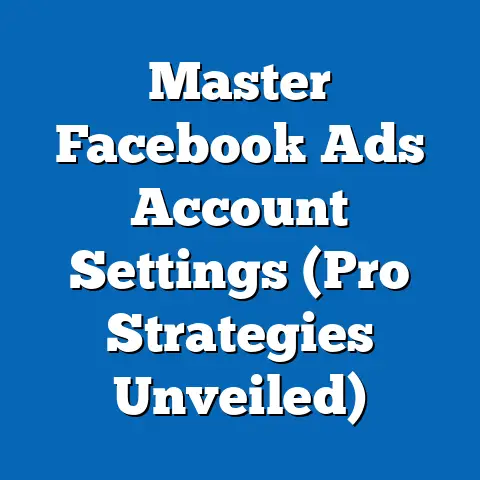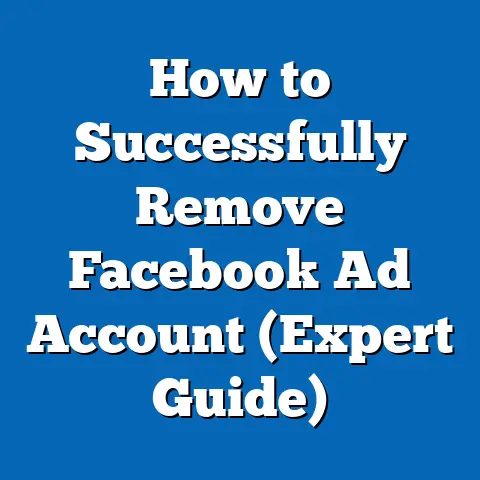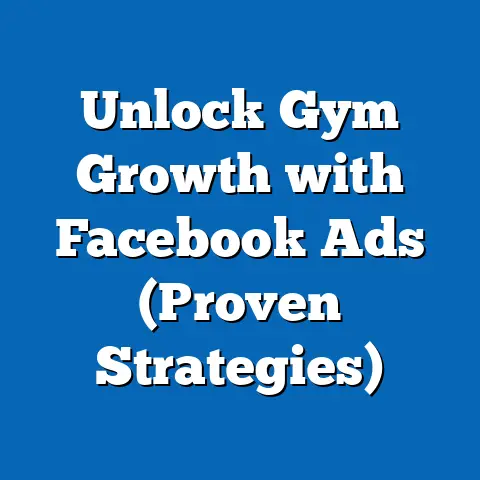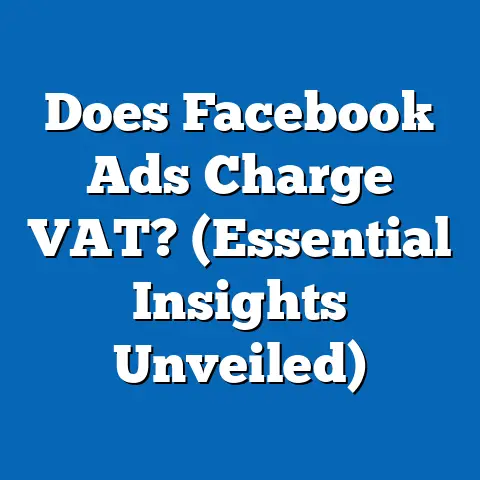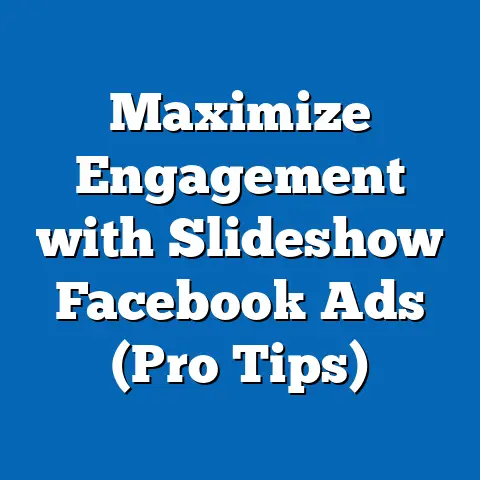Mastering Blocked Facebook Ads on iOS (Unlocking Solutions)
I remember the first time I truly understood the power of Facebook ads. It was for a local bakery struggling to stay afloat. We crafted a simple campaign showcasing their signature chocolate croissants, targeted at nearby residents. Within three months, their sales skyrocketed by 200%! It was a testament to Facebook’s ability to connect businesses with their ideal customers.
But this success story, like many others fueled by Facebook, faces a growing challenge: ad blocking, particularly on iOS devices. Many businesses are finding their carefully crafted ads vanishing into the digital ether, leaving them wondering how to reach their target audience. This guide is for those marketers and business owners. I’ll dive into the reasons behind blocked Facebook ads on iOS, explore the impact on your marketing strategies, and, most importantly, provide actionable solutions to unlock your ads and reclaim your reach.
Understanding the Problem
The issue of blocked Facebook ads on iOS is a multi-faceted one, stemming from a combination of technical factors, user preferences, and Apple’s increasing emphasis on privacy. It’s not just about people installing ad blockers; it’s a complex ecosystem of controls that impact ad visibility.
One of the primary culprits is the prevalence of ad blockers. These apps and browser extensions, readily available in the App Store, are designed to filter out unwanted content, including advertisements. Users install them for various reasons, ranging from improving website loading speeds to reducing data consumption and, of course, enhancing their online privacy.
Then there are the privacy settings within iOS itself. Apple’s App Tracking Transparency (ATT) framework, introduced in iOS 14.5, requires apps to explicitly ask users for permission to track their activity across other apps and websites. This seemingly small change has had a massive impact on the advertising landscape. Many users, when presented with the option, choose to opt out of tracking, limiting the data available to advertisers and making it harder to deliver targeted ads.
The technical reasons for ad blocking are often rooted in how these tools identify and block ad content. They typically use filter lists that contain known ad servers, URL patterns, and even specific code snippets commonly found in ads. When a website or app attempts to load content matching these criteria, the ad blocker intervenes, preventing the ad from displaying.
All of this culminates in a significant challenge for advertisers. A recent study found that nearly 30% of mobile users worldwide use ad blockers, and iOS users are among the most likely to do so. This translates to a substantial portion of your potential audience not seeing your ads, impacting your reach, engagement, and ultimately, your return on investment.
Key Takeaway: Blocked Facebook ads on iOS are a result of ad blockers, iOS privacy settings (like ATT), and the technical methods these tools use to identify and block ads. This impacts a significant portion of your potential audience.
The Impact of Blocked Ads on Marketing Strategies
The consequences of blocked ads extend far beyond simply fewer impressions. They ripple through your entire marketing strategy, affecting everything from brand awareness to lead generation and sales.
For smaller businesses and startups, the impact can be particularly devastating. These organizations often rely heavily on targeted advertising to reach their niche audiences and compete with larger players. When a significant portion of their target audience is effectively shielded from their ads, it can severely limit their growth potential.
Even large corporations aren’t immune. While they might have the resources to explore alternative marketing channels, blocked ads still represent a loss of potential revenue and a diminished return on their advertising investments.
Let’s consider a hypothetical case study: a fitness app that relies on Facebook ads to acquire new users. Before iOS 14.5, they were able to effectively target users based on their fitness interests, location, and demographics. Their cost per acquisition (CPA) was consistently around $5. However, after the introduction of ATT, their CPA jumped to $12, and their overall user acquisition rate plummeted. This forced them to re-evaluate their entire marketing strategy, exploring alternative channels and focusing on improving their organic reach.
Blocked ads also impact key performance indicators (KPIs) like:
- Reach: The number of unique users who see your ads.
- Engagement: Metrics like clicks, likes, shares, and comments.
- Conversion Rates: The percentage of users who take a desired action, such as making a purchase or signing up for a newsletter.
- Return on Ad Spend (ROAS): The revenue generated for every dollar spent on advertising.
When ads are blocked, these metrics all suffer, making it harder to measure the effectiveness of your campaigns and justify your advertising spend.
Adapting to these challenges requires a shift in mindset. Businesses need to move beyond simply relying on targeted advertising and explore alternative strategies to reach their audience. This might involve investing in content marketing, building stronger relationships with influencers, or exploring new advertising channels that are less susceptible to ad blocking.
Key Takeaway: Blocked ads negatively impact reach, engagement, conversion rates, and ROAS. Businesses need to adapt their strategies by exploring alternative channels and focusing on organic reach.
Effective Solutions to Unlock Ads on iOS
While the challenge of blocked Facebook ads on iOS is significant, it’s not insurmountable. By implementing a combination of strategic adjustments and leveraging the right tools, you can mitigate the impact and continue to reach your target audience.
Optimizing Ad Content
The first line of defense against ad blockers is to create engaging, high-quality ad content that doesn’t trigger their filters. This means avoiding overly aggressive sales tactics, using visually appealing creatives, and ensuring your ads comply with Facebook’s advertising guidelines.
Ad blockers often flag ads that are perceived as intrusive or annoying. This includes ads that use excessive animation, autoplay videos with sound, or contain misleading information. By focusing on providing value to your audience and creating ads that are genuinely helpful or entertaining, you can reduce the likelihood of them being blocked.
Native advertising techniques can also be effective. This involves creating ads that blend seamlessly with the surrounding content, making them less likely to be perceived as intrusive. For example, instead of running a traditional display ad, you might create a sponsored article or video that provides valuable information related to your product or service.
Here are some specific tips for optimizing your ad content:
- Use high-quality images and videos: Visuals are crucial for capturing attention and conveying your message.
- Write compelling copy that focuses on the benefits of your product or service: Tell your audience what’s in it for them.
- Avoid using clickbait or misleading headlines: Be honest and transparent about what you’re offering.
- Test different ad formats and creatives to see what resonates best with your audience: A/B testing is your friend.
- Ensure your ads are mobile-friendly: Most Facebook users access the platform on their mobile devices.
Leveraging Alternative Advertising Strategies
While Facebook remains a powerful advertising platform, it’s important to diversify your marketing efforts and explore alternative channels to reach iOS users.
Instagram, which is owned by Meta, offers a similar targeting platform to Facebook, but its ad formats and user demographics can differ. Instagram is particularly popular among younger audiences and is well-suited for visually driven campaigns.
Messenger ads can also be an effective way to reach users directly in their inboxes. These ads can be used to drive traffic to your website, generate leads, or even facilitate direct sales.
Collaborating with influencers can be another powerful way to reach your target audience. Influencers have built trust and credibility with their followers, making them effective brand ambassadors. By partnering with influencers who align with your brand values and target audience, you can reach a wider audience and generate more authentic engagement.
Retargeting ads can also be a valuable tool. These ads target users who have previously interacted with your website or app, making them more likely to convert. Even if a user has blocked your ads in the past, retargeting can help you re-engage them and remind them of your product or service.
Utilizing Facebook’s Tools and Features
Facebook offers a range of tools and features that can help advertisers navigate ad blocking issues and improve their targeting.
Custom Audiences allow you to target users based on your own data, such as email addresses, phone numbers, or website visitors. This can be particularly effective for retargeting campaigns, as you can target users who have already shown an interest in your product or service.
Lookalike Audiences allow you to target users who are similar to your existing customers. This can be a great way to expand your reach and find new customers who are likely to be interested in your product or service.
The Facebook Pixel is a code snippet that you can install on your website to track user behavior. This data can be used to optimize your ad campaigns, retarget users who have visited your website, and measure the effectiveness of your ads.
Facebook Analytics provides insights into your audience demographics, interests, and behaviors. This information can be used to refine your targeting and ad placements, ensuring your ads are reaching the right people.
By leveraging these tools and features, you can gain a better understanding of your audience and create more effective ad campaigns that are less likely to be blocked.
Educating Users About Ads
Ultimately, addressing the issue of ad blocking requires a shift in perception. Many users view ads as intrusive and annoying, but they can also be a valuable source of information and entertainment.
Businesses can play a role in educating users about the value of ads by being transparent about how their ads work and why they’re being shown. This might involve providing clear explanations of your targeting practices or highlighting the benefits of your product or service.
Encouraging users to whitelist businesses that provide quality content and services can also be effective. This allows users to support the businesses they value while still maintaining control over their online experience.
Key Takeaway: Optimizing ad content, leveraging alternative advertising strategies, utilizing Facebook’s tools and features, and educating users are all effective solutions to combat blocked ads on iOS.
Future Trends in Facebook Advertising on iOS
The landscape of Facebook advertising on iOS is constantly evolving, driven by changes in privacy regulations, user preferences, and technological advancements.
One potential trend is the rise of privacy-preserving advertising technologies. These technologies aim to deliver targeted ads without compromising user privacy. For example, federated learning allows advertisers to train machine learning models on user data without actually accessing or storing the data itself.
Another trend is the increasing emphasis on contextual advertising. This involves delivering ads based on the content of the website or app a user is currently viewing, rather than their personal data. This can be a more privacy-friendly way to target users, as it doesn’t rely on tracking their activity across other apps and websites.
We might also see innovations in ad formats that are less susceptible to ad blocking. For example, native advertising formats that blend seamlessly with the surrounding content are less likely to be flagged by ad blockers.
Key Takeaway: Future trends in Facebook advertising on iOS include privacy-preserving technologies, contextual advertising, and innovative ad formats.
Conclusion
Mastering Facebook ads on iOS in the face of ad blocking requires a proactive and adaptable approach. By understanding the reasons behind blocked ads, mitigating their impact on your marketing strategies, and implementing effective solutions, you can continue to reach your target audience and achieve your business goals.
It’s not about giving up on Facebook advertising altogether. It’s about adapting to the changing landscape and finding new ways to connect with your audience in a way that respects their privacy and provides them with value.
So, take the knowledge I’ve shared here and use it. Experiment with different ad formats, refine your targeting, and explore alternative advertising channels. The digital world is dynamic, and success belongs to those who are willing to adapt and innovate. Don’t let blocked ads hold you back – embrace the challenge and unlock your advertising potential.

